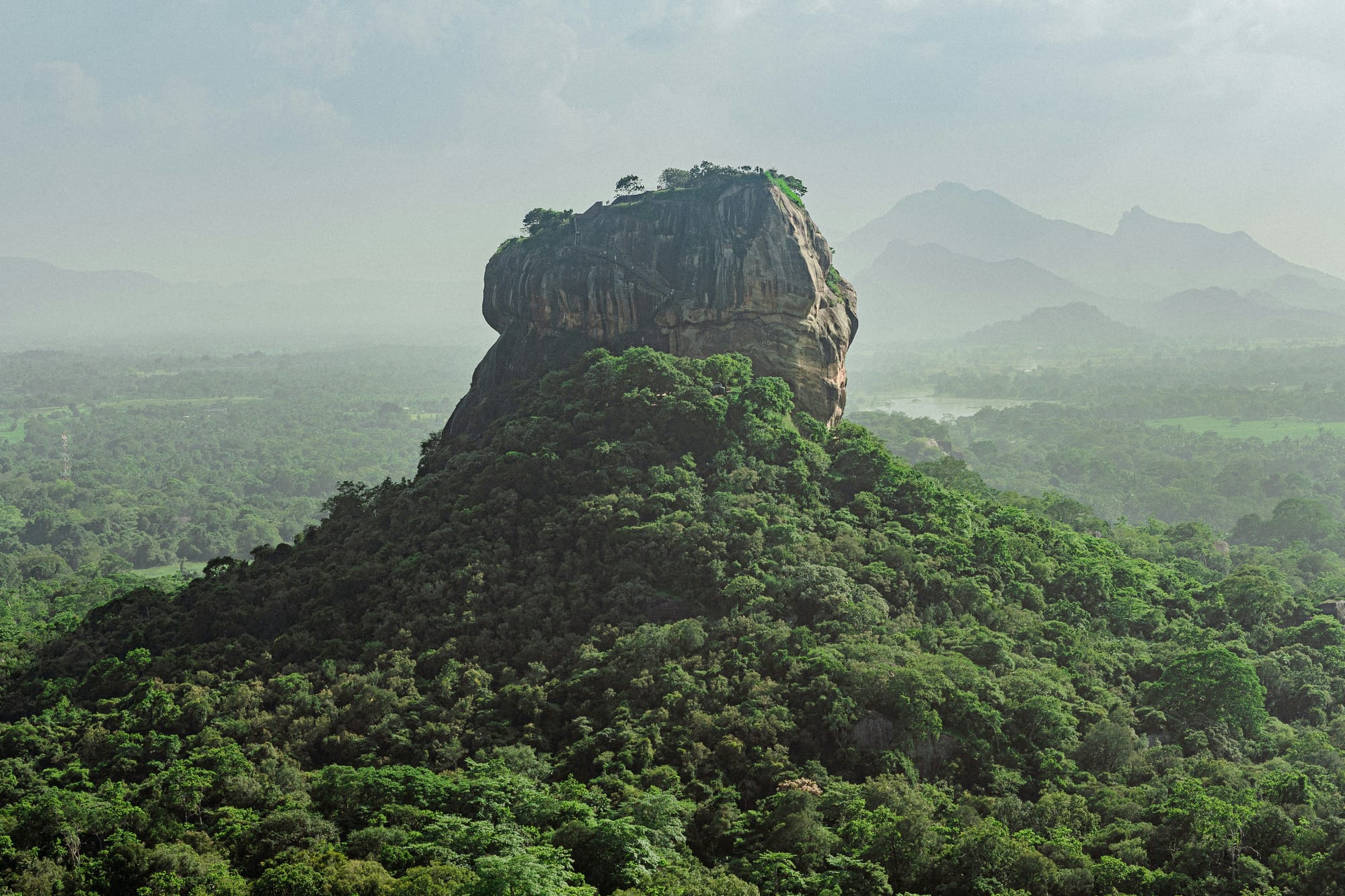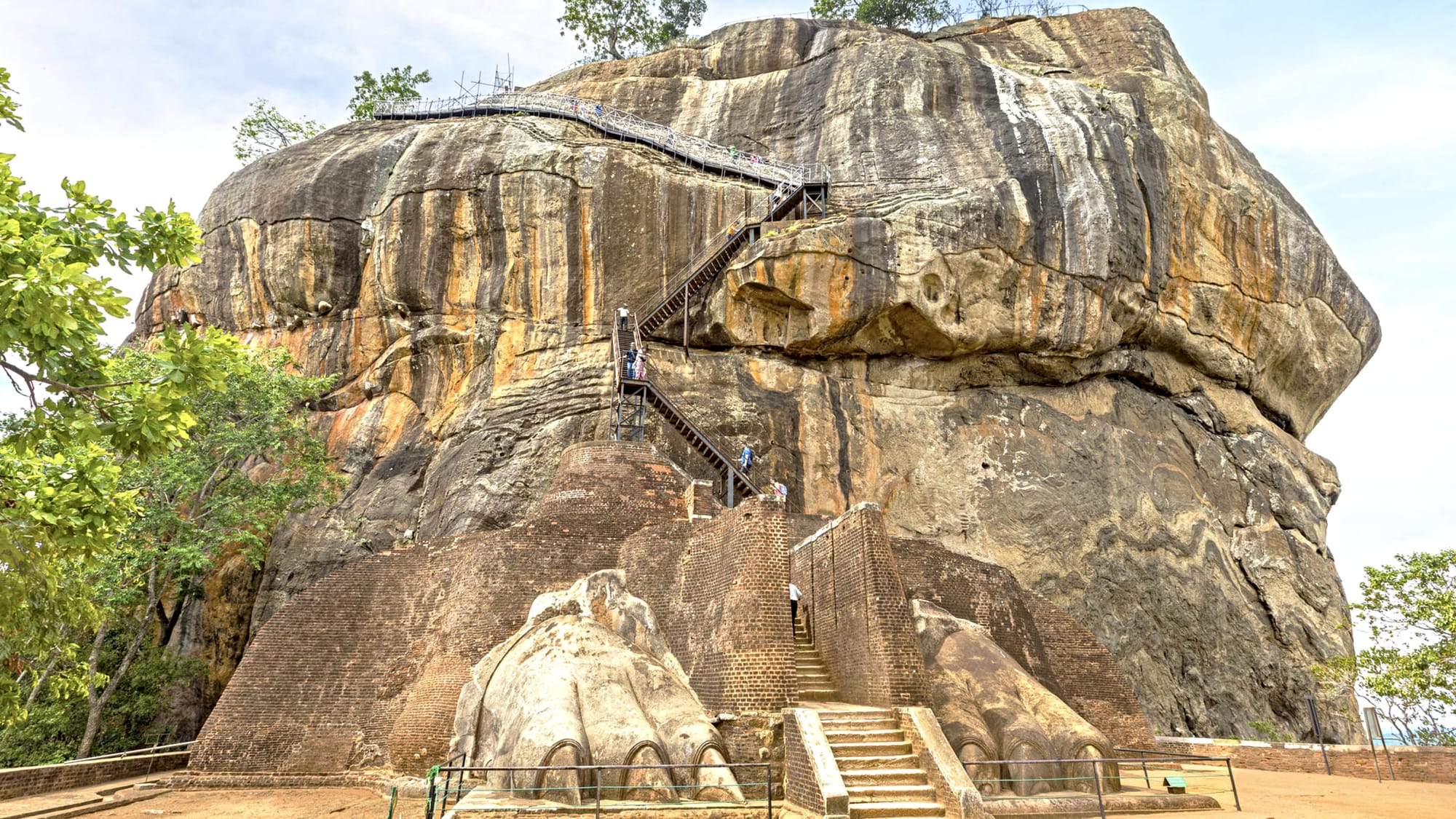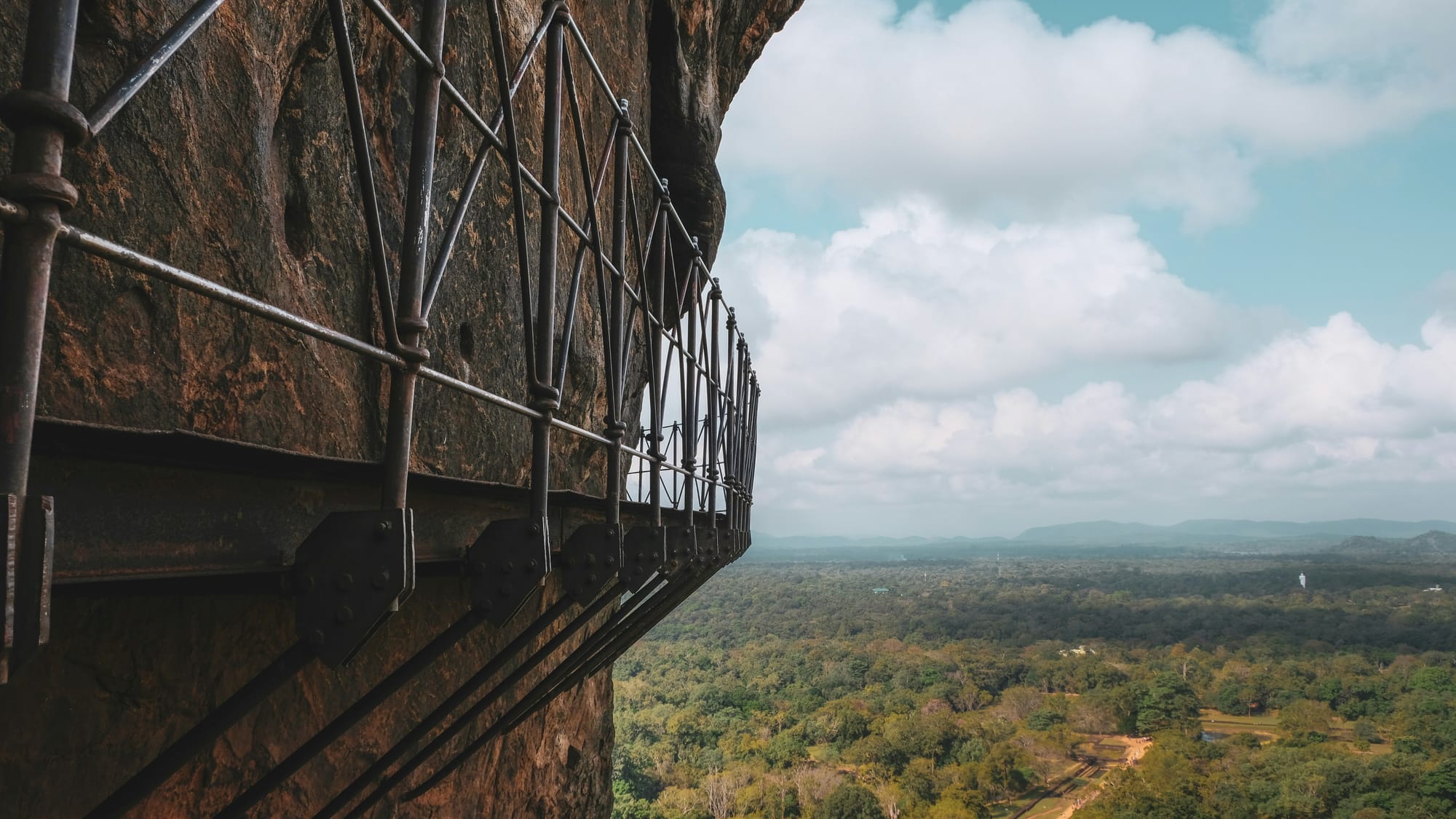Presented by Jacada Travel
It’s pouring rain and the four of us, sharing two umbrellas, are standing between two gigantic lion’s paws. Like a scene from of The Lord of the Rings, the pair of monumental paws form what was once the base of a whole lion, created from as many as three million stones and bricks, and stretching to the top of the sheer sided, massive monolith of red rock, that looms 200 meters above us.
Sigiriya, Lion Rock, the Castle in the Sky—call it what you will, this ancient fortress, perched on the top of rock that juts dramatically over the forests of central Sri Lanka, must once have been truly awe-inspiring.
But then this was surely the point; a warning to potential intruders.
The origins of Sigiriya’s habitation are shrouded in myth and mystery, unsurprising when you realize they stretch back 5,000 years.

What remains today is a comparatively recent legacy, beginning with the reign of King Kashyapa I, who ruled Sri Lanka in 473 CE, as the second king of the Moriya dynasty. (Like all great ruins, Sigiriya comes with a dramatic story.)
Kashyapa—a bastard son—is said to have entombed his father, the king, alive, in the process stealing the throne from his half-brother, Moggallana, who fled to India to plot revenge. Fearing this scenario, Kashyapa sought refuge atop the mighty rock and set about building a fortress just as ornate as it was heavily fortified. His machinations were in vain. Moggallana eventually returned and defeated his brother in a raging battle on the plains around Sigiriya in 495 CE. After Kashyapa’s army abandoned him and his war elephant, he committed suicide with his own sword.
Standing at the foot of this once mighty fortress, there are 1,270 steps ahead of us, which sounds like rather a lot, and the rain is getting heavier. We climb through the paws and onto a slightly less impressive metal staircase that clings to the rock face by way of some rusty looking attachments.


The lion's paws guarding the entrance to Sirigaya (left) and the precipitous walkway built into its ramparts. CREDIT: Sarah Kingdom, Kevin Charit
Hundreds of steps later we reach a final dizzying flight of stone stairs, each cut from quartz, so that, in the eons before electricity, they would shine brightly in the moonlight. This final section takes its toll, but it’s the view from the top that takes the last of our breath away.





